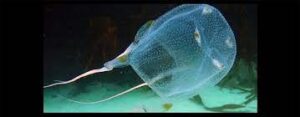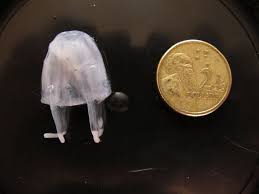Bites and Stings (Envenomation)
Bites and stings from venomous animals can be fatal due to the venomous poison and the effects it has on the nervous and respiratory system. The venom can cause an allergic reaction, respiratory failure and cardiac arrest.
Pressure Immobilisation Technique (P.I.T.)
Venom which has been injected causes the casualty to become ill very quickly as it is transported rapidly around the body through Lymphatic fluid. Pressure Immobilisation technique (P.I.T.), together with splinting, is a very effective form of management as it applies pressure directly to the bite site and the total limb slowing the rate at which the venom is transported around the body. By receiving the correct first aid treatment immediately it is unlikely that the casualty will die.
Applying Pressure Immobilisation Technique Bandages
![]() Apply a broad pressure bandage over the bite site as soon as possible. Crepe bandages are ideal, but any flexible material may be used. Clothing, towels etc. may be torn into strips.
Apply a broad pressure bandage over the bite site as soon as possible. Crepe bandages are ideal, but any flexible material may be used. Clothing, towels etc. may be torn into strips.
![]() Do not take clothing off as the movement of doing so will promote the movement of venom into the blood stream. Keep the casualty (and the bitten or stung limb) still.
Do not take clothing off as the movement of doing so will promote the movement of venom into the blood stream. Keep the casualty (and the bitten or stung limb) still.
![]() Bandage upwards from the lower portion of the bitten or stung limb. Even though a little venom may be squeezed upwards, the bandage will be more comfortable, and therefore can be left in place for longer if required.
Bandage upwards from the lower portion of the bitten or stung limb. Even though a little venom may be squeezed upwards, the bandage will be more comfortable, and therefore can be left in place for longer if required.
![]() The bandage should be as tight as you would apply to a sprained ankle.
The bandage should be as tight as you would apply to a sprained ankle.
![]() Extend the bandage as high as possible up the limb.
Extend the bandage as high as possible up the limb.
![]() Apply a splint to the leg. Any rigid object may be used as a splint e.g. spade, piece of wood or tree branch, rolled up newspapers etc.
Apply a splint to the leg. Any rigid object may be used as a splint e.g. spade, piece of wood or tree branch, rolled up newspapers etc.
![]() Bind it firmly to as much of the leg as possible.
Bind it firmly to as much of the leg as possible.
![]() Keep the casualty still. Lay the casualty down to prevent walking or moving around.
Keep the casualty still. Lay the casualty down to prevent walking or moving around.

Use Pressure Immobilisation Technique used for:
 Blue-Ringed Octopus stings
Blue-Ringed Octopus stings
 Cone Shell envenomation
Cone Shell envenomation
 Funnel Web and Mouse Spider bites
Funnel Web and Mouse Spider bites
 Snake bites
Snake bites
Australian Snake Bite
Australia has the deadliest snakes in the world and particularly in children symptoms can occur within minutes of envenomation. In adults however life threatening effects may not be seen for several hours. Any snake bite or suspected bite should be treated as serious and urgent medical attention sought as anti-venom is generally available for all species within Australia.
In most instances, a snake strikes quickly and injects venom below the surface of the skin into the tissues, which is then absorbed by the lymphatic system. The lymphatic system is a network of tubes that drains fluid (lymph) from the body’s tissues and empties it back into the bloodstream. Only rarely does the venom penetrate directly into the blood stream.
Should you see a snake, LEAVE IT ALONE – DO NOT attempt to kill it as all snakes are protected by law, and this can be highly dangerous. Stay clear of likely habitats, and always pay special attention to young children playing near long grass and bush. Research suggests that only around 15% of people struck by poisonous snakes are envenomated, but always treat for the worst case, and assume that venom has been injected. Although not essential it can be helpful if you have seen the snake to take a description of its colour, pattern, size and its environment. Never put yourself at risk to identify a snake and NEVER attempt to catch the snake.

![]() Paired puncture marks, a single mark/scratch or parallel scratches on the skin.
Paired puncture marks, a single mark/scratch or parallel scratches on the skin.
![]() Headache.
Headache.
![]() Nausea and/or vomiting.
Nausea and/or vomiting.
![]() Occasionally, initial collapse or confusion followed by partial or complete recovery.
Occasionally, initial collapse or confusion followed by partial or complete recovery.
![]() Abdominal pain.
Abdominal pain.
![]() Blurred or double vision, or drooping eyelids.
Blurred or double vision, or drooping eyelids.
![]() Difficulty swallowing, speaking or breathing.
Difficulty swallowing, speaking or breathing.
![]() Swollen tender glands in the groin or armpit of the bitten limb.
Swollen tender glands in the groin or armpit of the bitten limb.
![]() Limb weakness or paralysis.
Limb weakness or paralysis.
![]() Respiratory weakness or respiratory arrest.
Respiratory weakness or respiratory arrest.

![]() Follow the DRSABCD emergency action plan.
Follow the DRSABCD emergency action plan.
![]() Call 000 for an ambulance urgently.
Call 000 for an ambulance urgently.
![]() Lay the casualty down and keep them still, reassured and under constant observation.
Lay the casualty down and keep them still, reassured and under constant observation.
![]() Apply the Pressure Immobilisation Technique to the affected bite site and limb.
Apply the Pressure Immobilisation Technique to the affected bite site and limb.
-
- DO NOT wash the area of the bite.
- It is extremely important to retain traces of venom for use with venom identification kits, most hospitals will use a “broad spectrum antivenom”.
![]() The pressure bandage is best applied initially over the bite site, then down the entire limb to the wrist or ankle, then up the entire limb putting pressure over Lymphatic nodes.
The pressure bandage is best applied initially over the bite site, then down the entire limb to the wrist or ankle, then up the entire limb putting pressure over Lymphatic nodes.
![]() Splint the limb, including joints on either side of the bite.
Splint the limb, including joints on either side of the bite.
![]() Check the fingers/toes for adequate circulation.
Check the fingers/toes for adequate circulation.
![]() Keep the casualty calm and at rest.
Keep the casualty calm and at rest.
![]() Mark the bite site on the bandage.
Mark the bite site on the bandage.
![]() Monitor the casualty’s pulse, breathing and levels of consciousness.
Monitor the casualty’s pulse, breathing and levels of consciousness.
![]() DO NOT cut and suck the bite.
DO NOT cut and suck the bite.
![]() DO NOT use an arterial tourniquet.
DO NOT use an arterial tourniquet.
![]() DO NOT wash the bite.
DO NOT wash the bite.
![]() DO NOT remove bandages or splints.
DO NOT remove bandages or splints.
![]() DO NOT allow the casualty to walk around or move the affected limb.
DO NOT allow the casualty to walk around or move the affected limb.



Blue-Ringed Octopus and Cone Shell
In Australia Blue-Ringed Octopus can be found in all coastal waters and are often located in tidal pools. While resting, the Blue-Ringed Octopus is a pale brown to yellow colour. When threatened the blue rings on its body “light up” as a warning and it has a beak like mouth that it uses to bite. The bite is painless but should leave a spot of blood.
There are many species of cone shells found in the tropical waters of Australia. All have venom which they inject through a sharp spine if handled or trodden on.
You should never touch or handle a Blue-Ringed Octopus or a Cone Shell as their venom causes prolonged muscle weakness and if serious envenomation occurs death from respiratory paralysis can occur within only 30 minutes.
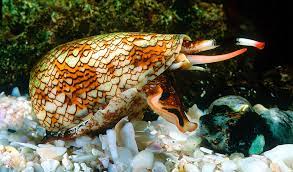


![]() Onset of nausea.
Onset of nausea.
![]() Hazy Vision (within seconds you are blind).
Hazy Vision (within seconds you are blind).
![]() Numbness of lips and tongue, loss of speech and the ability to swallow.
Numbness of lips and tongue, loss of speech and the ability to swallow.
![]() Within three minutes, the progressive weakness of muscles of respiration leading to inadequate, or cessation of, breathing.
Within three minutes, the progressive weakness of muscles of respiration leading to inadequate, or cessation of, breathing.

![]() Follow the DRSABCD emergency action plan.
Follow the DRSABCD emergency action plan.
![]() Call 000 for an ambulance – Call First and Call Fast.
Call 000 for an ambulance – Call First and Call Fast.
![]() Keep the casualty at rest, reassure and under constant observation.
Keep the casualty at rest, reassure and under constant observation.
![]() Use Pressure Immobilisation Technique.
Use Pressure Immobilisation Technique.
![]() Be prepared to commence CPR.
Be prepared to commence CPR.
Funnel Web Spider
Funnel-web spiders live in the moist forest regions of the east coast and highlands of Australia from Tasmania to North Queensland and are commonly found in and around Sydney. They are also found in the drier open forests of the Western Slopes of the Great Dividing Range and South Australia’s Gulf Ranges.
Any bite from a Funnel-web spider that is larger than 2cm should be treated seriously and immediate medical assistance sought. If in contact with skin the Funnel-web spider will administer numerous bites to its victim. Anti-venom is available for Funnel-web spiders.


![]() Pain and tingling at the site of the bite.
Pain and tingling at the site of the bite.
![]() Pale, cool, clammy skin.
Pale, cool, clammy skin.
![]() Tingling and numbness around mouth.
Tingling and numbness around mouth.
![]() Rapid weak pulse.
Rapid weak pulse.
![]() Difficulty breathing.
Difficulty breathing.
![]() Nausea and vomiting.
Nausea and vomiting.
![]() Abdominal pain.
Abdominal pain.
![]() Profuse sweating.
Profuse sweating.
![]() Increase in the secretion of saliva.
Increase in the secretion of saliva.
![]() Confusion leading to unconsciousness.
Confusion leading to unconsciousness.

![]() Follow the DRSABCD emergency action plan.
Follow the DRSABCD emergency action plan.
![]() Call 000 for an ambulance.
Call 000 for an ambulance.
![]() Keep the casualty at rest, reassure and under constant observation.
Keep the casualty at rest, reassure and under constant observation.
![]() Apply Pressure Immobilisation Technique.
Apply Pressure Immobilisation Technique.
![]() Be prepared to commence CPR.
Be prepared to commence CPR.
Cold/Ice Compresses for the Treatment of Stings
Cold/ice compresses are used in the treatment of certain bites and stings as the cold reduces the speed at which venom spreads locally in the tissue fluids and as a pain relief.
Cold/Ice compresses are used for:
 Bee stings.
Bee stings.
 Centipede bites.
Centipede bites.
 European wasp stings.
European wasp stings.
 Redback spider bites.
Redback spider bites.
 Scorpion envenomation.
Scorpion envenomation.
 White tail spider.
White tail spider.
 Various ants including the fire ant.
Various ants including the fire ant.
Bee, Wasp and Ant
When bees sting a person, they inject venom through their stinger into the skin of the victim. The honey bee has a barbed stinger that remains in the victim’s skin with its venom sack attached.
For most people a bee sting is a temporary irritation, however in approximately 3% of people an allergic reaction to the sting occurs, and up to 0.8% of bee sting victims experience the severe and life-threatening allergic reaction known as anaphylaxis.
Wasps have stingers without barbs that are usually retracted upon stinging; wasps are able to sting people multiple times. The European wasp is an introduced species to Australia that is yellow and black in colour, similar to a bee.


![]() Evidence of bee sting with the barb visible.
Evidence of bee sting with the barb visible.
![]() Immediate pain and itching to the site.
Immediate pain and itching to the site.
![]() Redness and swelling at the bite site.
Redness and swelling at the bite site.
![]() In allergic persons signs and symptoms include.
In allergic persons signs and symptoms include.
![]() Wheezing and difficulty breathing.
Wheezing and difficulty breathing.
![]() Facial swelling and hives.
Facial swelling and hives.
![]() Itchy rash.
Itchy rash.
![]() Collapse.
Collapse.
If stung in or around the mouth local swelling can result in airway obstruction and urgent medical care is required immediately.
In an anaphylactic person dangerous effects can occur within minutes.

![]() Follow the DRSABCD emergency action plan
Follow the DRSABCD emergency action plan
![]() Reassure the casualty.
Reassure the casualty.
![]() Remove a bee sting by scraping off sideways with a finger nail or sharp edge. DO NOT squeeze or pull the sack because this will inject more venom.
Remove a bee sting by scraping off sideways with a finger nail or sharp edge. DO NOT squeeze or pull the sack because this will inject more venom.
![]() Apply a cold compress to the bite site to relieve the pain after the removal of the sting.
Apply a cold compress to the bite site to relieve the pain after the removal of the sting.
![]() If the casualty has a history or shows any signs of an allergic reaction use the Pressure Immobilisation Technique immediately.
If the casualty has a history or shows any signs of an allergic reaction use the Pressure Immobilisation Technique immediately.
![]() Call 000 for an ambulance immediately.
Call 000 for an ambulance immediately.
![]() Monitor the casualty and be prepared to commence CPR if necessary.
Monitor the casualty and be prepared to commence CPR if necessary.
Spiders
Redback Spider
Redback spiders are found throughout Australia, in drier habitats and built-up areas. Mature female Redbacks are jet black in colour with a distinctive red (or orange) stripe on the back of their round abdomen. Immature females are smaller, usually brown with whitish markings.
They are commonly found in dry places around buildings, outdoor furniture, machinery and stacked materials. In the bush, Redback spiders nest under logs and rocks. Their tough, untidy webs are usually near the ground with the spider hiding in a shelter tucked in a corner, often guarding her round woolly egg sacs.
The Redback spider is the cause of more hospital presentations each year in Australia than any other venomous animal. A closely related species, the Brown House spider, is also dangerous, with bites displaying the same signs and symptoms of that of the Redback, although typically less severe. The following information applies to both species except where the distinction is made.
In normal circumstances although the bite from a Redback spider can cause pain and severe illness to an infant or small child, they are generally not regarded as life-threatening. However, urgent medical assistance should always be sought as there is an anti-venom available.
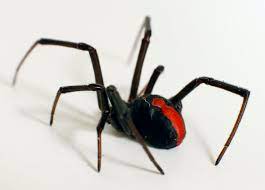

![]() Immediate pain at the bite site.
Immediate pain at the bite site.
![]() Bite site becomes hot, red and swollen.
Bite site becomes hot, red and swollen.
![]() Intense local pain which increases and spreads.
Intense local pain which increases and spreads.
![]() Rapid, shallow breathing.
Rapid, shallow breathing.
![]() Swollen, tender glands in the groin and armpit of the envenomed limb.
Swollen, tender glands in the groin and armpit of the envenomed limb.
![]() Profuse sweating, especially at the bite site.
Profuse sweating, especially at the bite site.
![]() Abdominal pain, nausea and vomiting.
Abdominal pain, nausea and vomiting.

![]() Follow the DRSABCD emergency action plan
Follow the DRSABCD emergency action plan
![]() Reassure the casualty.
Reassure the casualty.
![]() Apply a cold compress to the bite site to relieve the pain.
Apply a cold compress to the bite site to relieve the pain.
![]() Elevate the bitten limb to reduce pain and swelling.
Elevate the bitten limb to reduce pain and swelling.
![]() Monitor casualty for signs of deterioration.
Monitor casualty for signs of deterioration.
![]() Call 000 for an ambulance immediately if the casualty is an infant or young child, the casualty has collapsed or pain is severe.
Call 000 for an ambulance immediately if the casualty is an infant or young child, the casualty has collapsed or pain is severe.
![]() DO NOT use Pressure Immobilisation Technique as the venom is slow acting and any attempt to reduce movement will only increase local pain.
DO NOT use Pressure Immobilisation Technique as the venom is slow acting and any attempt to reduce movement will only increase local pain.
White Tail Spider
In most cases, the bite from a White Tailed spider only causes a mild reaction, however it may cause severe inflammation which usually resolves after a few weeks. Contrary to previous indications only a very few cases of severe local tissue destruction are known following this bite.
Other spiders that have been associated with venomous bites are the Trapdoor spider and Wolf spider. The bite of these spiders causes tissue necrosis, the death of the tissue around the bitten area. A doctor should treat bites from these spiders and assess the bitten area over a period of time to observe for any detrimental effects.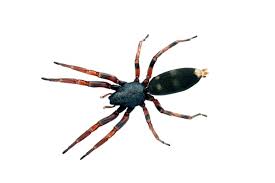

![]() Itchy skin
Itchy skin
![]() Skin discolouration
Skin discolouration
![]() Inflammation
Inflammation

![]() There are no specific first aid treatments for a White Tail spider bite.
There are no specific first aid treatments for a White Tail spider bite.
![]() Use of cold packs can help to relieve pain and swelling.
Use of cold packs can help to relieve pain and swelling.
![]() DO NOT use Pressure Immobilisation Technique.
DO NOT use Pressure Immobilisation Technique.
![]() Always see your doctor if any spiders bite has a prolonged healing time.
Always see your doctor if any spiders bite has a prolonged healing time.
![]() Antibiotics should not be used for a White Tail spider bite.
Antibiotics should not be used for a White Tail spider bite.
Scorpion
Within Australia there are no Australian species of scorpion known to cause severe illness.

![]() Immediate intense localised pain to the bite site.
Immediate intense localised pain to the bite site.
![]() Bite site becomes red, hot and swollen.
Bite site becomes red, hot and swollen.
![]() Itching at the site.
Itching at the site.
![]() Pain increases and spreads.
Pain increases and spreads.
![]() Nausea and/or vomiting.
Nausea and/or vomiting.
![]() In allergic persons signs and symptoms include:
In allergic persons signs and symptoms include:
- Onset of wheezing and breathing difficulties.
- Facial swelling and hives.
- Rapid pulse.
- Collapse.

![]() Follow the DRSABCD emergency action plan
Follow the DRSABCD emergency action plan
![]() Reassure the casualty.
Reassure the casualty.
![]() Apply a cold compress to the bite site to relieve the pain.
Apply a cold compress to the bite site to relieve the pain.
![]() Elevate the bitten limb to reduce pain and swelling.
Elevate the bitten limb to reduce pain and swelling.
![]() Monitor casualty for signs of deterioration.
Monitor casualty for signs of deterioration.
![]() If casualty shows signs of allergic reaction:
If casualty shows signs of allergic reaction:
- Call 000 for an ambulance.
- Apply Pressure Immobilisation Technique.
Hot Water for the Treatment of Stings
Used for:
 Stingray.
Stingray. 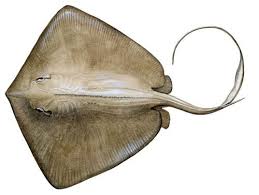
 Bullrout.
Bullrout.
 Stonefish.
Stonefish.
 Catfish.
Catfish.
 Crown-of-Thorn Starfish.
Crown-of-Thorn Starfish.
 Blue Bottle Jellyfish (Portuguese Man-of-War).
Blue Bottle Jellyfish (Portuguese Man-of-War).
Stonefish / Bullrout / Stingray
The stonefish, bullrout and stingray all cause injury by injecting venom through their spines deep under the skin of the victim. The venom of these fish is toxic and causes excruciating pain within minutes.
These fish camouflage to the sea floor and swimmers are generally injured when they step onto the fish or when the fish are being pulled into a boat.
Swimmers should at all times be wary and take appropriate caution when swimming and all fish should be handled with care, avoiding spinous areas along the backbone and around the gills.
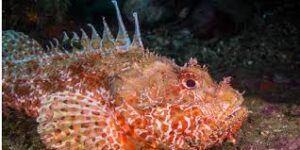

![]() Intense pain at the site.
Intense pain at the site.
![]() Swelling.
Swelling.
![]() Open wound.
Open wound.
![]() Bleeding.
Bleeding.
![]() Fragments of a barb from a stingray may be embedded in the skin.
Fragments of a barb from a stingray may be embedded in the skin.
![]() Grey/bluish discolouration at the site.
Grey/bluish discolouration at the site.
![]() Casualty may show irrational behaviour and panic.
Casualty may show irrational behaviour and panic.

![]() Follow the DRSABCD emergency action plan
Follow the DRSABCD emergency action plan
![]() Reassure the casualty.
Reassure the casualty.
![]() Immerse the casualty’s affected part in hot water (no hotter than the first aider can comfortably tolerate).
Immerse the casualty’s affected part in hot water (no hotter than the first aider can comfortably tolerate).
![]() If the hot water does not relieve the pain, apply a cold pack.
If the hot water does not relieve the pain, apply a cold pack.
![]() Seek medical assistance or call 000 for an ambulance.
Seek medical assistance or call 000 for an ambulance.
![]() Monitor the casualty’s breathing.
Monitor the casualty’s breathing.
![]() DO NOT use the Pressure Immobilisation Technique.
DO NOT use the Pressure Immobilisation Technique.
![]() Anti-venom is available for stonefish envenomation.
Anti-venom is available for stonefish envenomation.
![]() If handling fish without protective gloves, wash hands frequently to avoid skin problems.
If handling fish without protective gloves, wash hands frequently to avoid skin problems.
Blue Bottle Jellyfish (Portuguese Man-of-War)
In Australia and New Zealand, the Blue Bottle Jellyfish is named for its colour and shape when lying on a beach. Elsewhere in the world it is known as the “Portuguese Man-of-War”.
The Blue Bottle Jellyfish is not a single organism, but made up of a number of zooids. Each zooid has a specific role and together they function as if it were an animal.
If a tentacle attaches itself to a human, it releases a poison, and if you continue to rub the skin after the tentacle has been removed more poison or venom will be released. The body of the blue bottle measures between 3 to 15cms. The tentacles can range in length from 15cms up to 10metres.
People who are susceptible to bee sting are usually sensitive to Blue Bottle Jellyfish venom. No fatalities have ever been reported within Australia or New Zealand from the sting of a Blue Bottle Jellyfish.

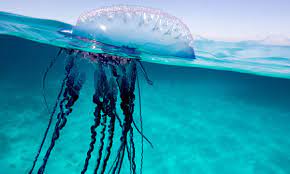
![]() Pain lasting for several hours.
Pain lasting for several hours.
![]() Reddening of the skin.
Reddening of the skin.
![]() Stinging sensation associated with contact.
Stinging sensation associated with contact.
![]() Remnants of blue tentacles attached to the skin.
Remnants of blue tentacles attached to the skin.
![]() May cause severe allergic reaction.
May cause severe allergic reaction.

![]() Follow the DRSABCD emergency action plan
Follow the DRSABCD emergency action plan
![]() Reassure the casualty.
Reassure the casualty.
![]() Remove any tentacles with large amounts of sea water.
Remove any tentacles with large amounts of sea water.
![]() Immerse the casualty’s affected part in hot water (no hotter than the first aider can comfortably tolerate).
Immerse the casualty’s affected part in hot water (no hotter than the first aider can comfortably tolerate).
![]() If the hot water does not relieve the pain, apply a cold pack.
If the hot water does not relieve the pain, apply a cold pack.
![]() If reaction is severe monitor the casualty’s breathing and
If reaction is severe monitor the casualty’s breathing and
![]() Seek medical assistance or call 000 for an ambulance.
Seek medical assistance or call 000 for an ambulance.
Vinegar for the Treatment of Stings
Box Jellyfish and Irukandji Stings
With few exceptions, the Box Jellyfish causes debilitating or fatal stings in humans. They are named after their box-shaped bodies and depending on the species have multiple tentacles hanging from each of the four corners of their bells or a single tentacle hanging from each corner; with tentacles stretching up to two metres. Box jellyfish can be found in most tropical waters around the world. In Australia, they are found in tropical waters predominantly November to May, but can be present throughout the year.

![]() Immediate severe pain.
Immediate severe pain.
![]() Restless and irrational behaviour because of the pain.
Restless and irrational behaviour because of the pain.
![]() Acute inflammatory response on the skin producing redness, welts and swelling.
Acute inflammatory response on the skin producing redness, welts and swelling.
![]() Rapid, irregular pulse.
Rapid, irregular pulse.
![]() Nausea and vomiting.
Nausea and vomiting.
![]() Headache.
Headache.
![]() Profuse sweating, sometimes only in the sting area.
Profuse sweating, sometimes only in the sting area.
![]() Collapse.
Collapse.
![]() Difficulty or cessation of breathing – respiratory arrest.
Difficulty or cessation of breathing – respiratory arrest.
![]() Cardiac arrest.
Cardiac arrest.

![]() Follow the DRSABCD emergency action plan
Follow the DRSABCD emergency action plan
![]() Remove the casualty from the water.
Remove the casualty from the water.
![]() Call for help from Lifesaver/Lifeguard and dial 000 for an ambulance urgently.
Call for help from Lifesaver/Lifeguard and dial 000 for an ambulance urgently.
![]() DO NOT allow rubbing of the sting area.
DO NOT allow rubbing of the sting area.
![]() Pour vinegar liberally over the sting area to neutralise invisible stinging cells.
Pour vinegar liberally over the sting area to neutralise invisible stinging cells.
![]() DO NOT wash the sting with fresh water.
DO NOT wash the sting with fresh water.
![]() Reassure the casualty.
Reassure the casualty.
![]() Monitor vital signs until the ambulance arrives.
Monitor vital signs until the ambulance arrives.
![]() Commence CPR if required.
Commence CPR if required.
Anti-venom is available for certain species of the Box Jellyfish stings. In tropical coastal areas ambulances and hospitals carry anti-venom.
Irukandji Jellyfish
What is commonly known as the Irukandji Jellyfish is a small transparent box jellyfish 1-2 cm in diameter, with a single tentacle on each corner of its box-shaped body.
While Irukandji was originally used to refer to a single species of jellyfish, it is now used to refer to any box jellyfish with a sting that produces Irukandji Syndrome.
In Australia, most cases are restricted to waters north of the Tropic of Capricorn although some occur as far south as Bundaberg on the east coast. They occur mostly between November and May but cases have been recorded in all months of the year. The number of people who are stung and present to hospital each year varies – from only a few to more than 200 people.
Envenomation of Jellyfish Stings
The venom of the jellyfish is contained within small capsules located on the tentacles. Envenomation occurs if the tentacles make contact with skin and upon contact discharges venom into the skin.
Preventing the Jellyfish Stings
Swim in supervised areas such as a beach where Surf Lifesavers monitor the presence of dangerous jellyfish. The mesh used in stinger-resistant nets in north Queensland is fine enough to keep out the box jellyfish but may allow Irukandji jellyfish to pass through. A lycra body suit can help protect against stings.

![]() Minor pain initially, increasing over time to severe.
Minor pain initially, increasing over time to severe.
![]() Shooting pains in chest and abdomen muscles.
Shooting pains in chest and abdomen muscles.
![]() Lower back pain.
Lower back pain.
![]() Restlessness and anxiety.
Restlessness and anxiety.
![]() Collapse.
Collapse.
![]() Difficulty or cessation of breathing – respiratory arrest.
Difficulty or cessation of breathing – respiratory arrest.
![]() Cardiac arrest.
Cardiac arrest.

![]() Follow the DRSABCD emergency action plan
Follow the DRSABCD emergency action plan
![]() Remove the casualty from the water.
Remove the casualty from the water.
![]() Call for help from Lifesaver/Lifeguard and dial 000 for ambulance urgently.
Call for help from Lifesaver/Lifeguard and dial 000 for ambulance urgently.
![]() DO NOT allow rubbing of the sting area.
DO NOT allow rubbing of the sting area.
![]() Pour vinegar liberally over the sting area to neutralise invisible stinging cells.
Pour vinegar liberally over the sting area to neutralise invisible stinging cells.
![]() DO NOT wash the sting with fresh water.
DO NOT wash the sting with fresh water.
![]() Reassure the casualty.
Reassure the casualty.
![]() Monitor vital signs until the ambulance arrives.
Monitor vital signs until the ambulance arrives.
![]() Commence CPR if required.
Commence CPR if required.
Although no anti-venom is available, effective medical treatment is administered in hospital.

Tick Bite
The Australian Paralysis Tick (commonly known as the “hard” or “scrub” tick) inhabits the east coast of Australia. Ticks may attach to any part of the body but are often found in hairy areas, skin clefts and crevices. Ticks envenomate and cause paralysis and allergic reactions in humans.

Signs and symptoms of envenomation generally develop over several days but allergic symptoms can occur within hours.
![]() Local irritation.
Local irritation.
![]() Lethargy.
Lethargy.
![]() Muscle weakness, especially in children.
Muscle weakness, especially in children.
![]() Unsteady gait.
Unsteady gait.
![]() Double vision.
Double vision.
![]() Difficulty in swallowing or breathing.
Difficulty in swallowing or breathing.
![]() Rapid local swelling.
Rapid local swelling.
![]() Wheezing and difficulty breathing.
Wheezing and difficulty breathing.
![]() Collapse.
Collapse.

![]() Reassure the casualty.
Reassure the casualty.
![]() Use Medi Freeze or similar product if available.
Use Medi Freeze or similar product if available.
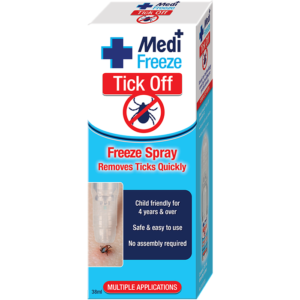
![]() Use fine curved forceps, sharp pointed tweezers or similar for simple removal of the tick if it is not deep in the skin.
Use fine curved forceps, sharp pointed tweezers or similar for simple removal of the tick if it is not deep in the skin.
![]() Always check the casualty’s entire body, including the ears, skin creases and hair for further ticks.
Always check the casualty’s entire body, including the ears, skin creases and hair for further ticks.
![]() After removal of a tick the casualty should be advised to see a doctor to check that no further treatment is required.
After removal of a tick the casualty should be advised to see a doctor to check that no further treatment is required.
![]() DO NOT grasp or squeeze the tick as this may result in incomplete removal or the injection of further venom.
DO NOT grasp or squeeze the tick as this may result in incomplete removal or the injection of further venom.
![]() If the casualty develops a rash, persistent headache, fever, aching joints or has a history of an allergy then seek immediate medical advice.
If the casualty develops a rash, persistent headache, fever, aching joints or has a history of an allergy then seek immediate medical advice.

